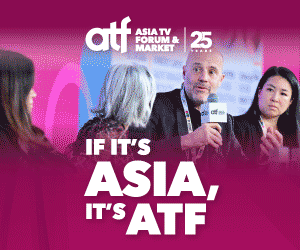
“Winning on Twitter is all about personality. Mobile phones are places of personality. They’re not places where people want to consume press releases, they want to feel like they’re a part of the story – they want to be touched by characters and shows and more... We begin the journey with media companies that way.”
“Star India is a good example [of a broadcaster that has done really well on Twitter]. On a number of shows, we’ve worked with them first and foremost on the basics: Does your TV channel/production house have a Twitter account? Is your talent on Twitter? Are your executives on Twitter? Are your mascots on Twitter? Are your characters on Twitter?
Over time that leads to audience gains. It results in, for instance, the ability to publish live video during a broadcast; particularly around cricket, they’ve done an outstanding job. And now they’ve run programmes where, when they publish live video clips on Twitter, the audience is so substantial they’re actually finding sponsors for their content on Twitter.
So here’s a wicket during the match, here’s the replay 30 seconds later, pre-roll from Vodaphone, here is the clip on Twitter. Because Twitter is where people go for live content.
But none of that is possible unless you’ve first invested in a whole host of creativity, and a whole host of organic investment in storytelling on Twitter.”
“We have programmes that are revenue positive for media companies. From Korea to Australia to India, we’ve seen owners of content – whether it’s cricket, whether it’s music – push content on Twitter that is sponsored. But none of that is possible unless you have invested the time to build that audience in the first place.”
“Consumers are increasingly interested in experiences where, for instance, they’re watching a match and they want to see the replay immediately; where they’re watching television and they’re watching it with the writer and actor sitting next to them; or in your mobile app and they’re watching ...
“Winning on Twitter is all about personality. Mobile phones are places of personality. They’re not places where people want to consume press releases, they want to feel like they’re a part of the story – they want to be touched by characters and shows and more... We begin the journey with media companies that way.”
“Star India is a good example [of a broadcaster that has done really well on Twitter]. On a number of shows, we’ve worked with them first and foremost on the basics: Does your TV channel/production house have a Twitter account? Is your talent on Twitter? Are your executives on Twitter? Are your mascots on Twitter? Are your characters on Twitter?
Over time that leads to audience gains. It results in, for instance, the ability to publish live video during a broadcast; particularly around cricket, they’ve done an outstanding job. And now they’ve run programmes where, when they publish live video clips on Twitter, the audience is so substantial they’re actually finding sponsors for their content on Twitter.
So here’s a wicket during the match, here’s the replay 30 seconds later, pre-roll from Vodaphone, here is the clip on Twitter. Because Twitter is where people go for live content.
But none of that is possible unless you’ve first invested in a whole host of creativity, and a whole host of organic investment in storytelling on Twitter.”
“We have programmes that are revenue positive for media companies. From Korea to Australia to India, we’ve seen owners of content – whether it’s cricket, whether it’s music – push content on Twitter that is sponsored. But none of that is possible unless you have invested the time to build that audience in the first place.”
“Consumers are increasingly interested in experiences where, for instance, they’re watching a match and they want to see the replay immediately; where they’re watching television and they’re watching it with the writer and actor sitting next to them; or in your mobile app and they’re watching television, and the story feels like their own, like they’ve co-produced it. So a lot of the tools around data and analaytics and sentiment and curation and video publishing are things that we spend a lot of time working with partners on.”
“We believe that Twitter is your mobile microphone.”
“Advertisers are increasingly interested not just in the size of the audience, but in the engagement of the audience. How alive is an audience that’s consuming a particular form of media? How expressive are they? And so increasingly Twitter data – the extent to which your content is generating expression on Twitter, engagement on Twitter – is viewed as an important metric in the marketplace.”
“All of our data is public... we generate about a billion tweets every two days [September 2015], which is again a public expression metric. There are many ways to connect to that data; there are a range of third parties in the marketplace that have built massive businesses just analysing Twitter data, country by country, telling a story around it, visualising it, customising it for a particular client, so it compliments how they think about their audience.”
“We’re the world’s biggest focus group in many ways.”
“Many sports federations now have a
Twitter command centre in their office where they’re constantly tracking the mood of the crowd.”
*Jaitly was speaking during the ContentAsia Summit in Singapore in September 2015 in the social media keynote session, "Up your act with social TV".
This article first appeared in ContentAsia Issue 6, 2015, published in December 2015.



















